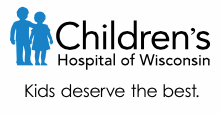Near-infrared Spectroscopy (NIRS) Neurodevelopmental Outcomes
| Status: | Active, not recruiting |
|---|---|
| Conditions: | Cardiology |
| Therapuetic Areas: | Cardiology / Vascular Diseases |
| Healthy: | No |
| Age Range: | 4 - 5 |
| Updated: | 4/21/2016 |
| Start Date: | August 2006 |
| End Date: | December 2016 |
Neurodevelopmental Outcomes and Postoperative Hemodynamics in Children With Hypoplastic Left Heart Syndrome
We believe that how a baby with Hypoplastic Left Heart Syndrome (HLHS)does after a major
open heart operation, measured by things like blood pressure, oxygen saturation, heart rate
and others, may have an impact on development. Studying how post-operative condition impacts
outcomes may help us to protect babies better when they undergo surgery.
This study will look at some of the long-term outcomes of children with HLHS, including both
mental development and quality of life. We will use information from your child's medical
record to see if early oxygen delivery has an impact on later development.
open heart operation, measured by things like blood pressure, oxygen saturation, heart rate
and others, may have an impact on development. Studying how post-operative condition impacts
outcomes may help us to protect babies better when they undergo surgery.
This study will look at some of the long-term outcomes of children with HLHS, including both
mental development and quality of life. We will use information from your child's medical
record to see if early oxygen delivery has an impact on later development.
Over the past twenty years, the field of congenital heart disease has been marked by
globally improved survival after complex congenital heart surgery. These improved results
are clearly multi-factorial and include advances in diagnostic technologies, surgical
techniques, perfusion strategies, pharmacologic therapies and perioperative monitoring of
tissue oxygen delivery.
Hypoplastic left heart syndrome (HLHS) represents an extreme form of complex congenital
heart disease in which the infant has prolonged cyanosis and a single systemic right
ventricle. Staged palliation beginning with surgery in the neonatal period is the most
common approach to infants with HLHS. After initial surgical palliation, infants are
critically ill due to ischemia/reperfusion injury from cardiopulmonary bypass, coronary
ischemia attributed to diastolic runoff, reduced total ventricular mass, continued hypoxemia
during a time of increased metabolic demands, and finally, the inherent inefficiency of
parallel circulation. The presence of any one of these physiologic derangements places the
infant with HLHS at great risk for ischemia, organ dysfunction, circulatory collapse and,
even, death. Postoperative monitoring of venous oximetry and, more recently, near infrared
spectroscopy, have identified periods of impaired oxygen delivery and ischemia, allowed for
interventions that enhance oxygen delivery and improved survival after cardiac surgery.
Although, an apparent relationship exists between oxygen delivery and survival after cardiac
surgery, little data is available on the relationship between oxygen delivery and
neurodevelopmental outcomes (inclusive of neurocognitive and neuropsychologic outcomes).
Preliminary data from our center has recently identified that reduced venous oximetry was
associated with adverse neurodevelopmental outcome. These initial findings warrant further
investigation of neurologic injury, specifically, how such morbidity relates to
perioperative ischemia and cerebral oxygen delivery. Hence, the purpose of this study is to
understand the relationship of perioperative tissue dysoxia and long-term neurodevelopmental
morbidity in children subject to oxygen delivery at which neurodevelopment is compromised.
Identification of a critical threshold that may be devastating to a child's neurodevelopment
and quality of life would allow for early intervention, goal-directed therapy and
ultimately, improve outcomes.
globally improved survival after complex congenital heart surgery. These improved results
are clearly multi-factorial and include advances in diagnostic technologies, surgical
techniques, perfusion strategies, pharmacologic therapies and perioperative monitoring of
tissue oxygen delivery.
Hypoplastic left heart syndrome (HLHS) represents an extreme form of complex congenital
heart disease in which the infant has prolonged cyanosis and a single systemic right
ventricle. Staged palliation beginning with surgery in the neonatal period is the most
common approach to infants with HLHS. After initial surgical palliation, infants are
critically ill due to ischemia/reperfusion injury from cardiopulmonary bypass, coronary
ischemia attributed to diastolic runoff, reduced total ventricular mass, continued hypoxemia
during a time of increased metabolic demands, and finally, the inherent inefficiency of
parallel circulation. The presence of any one of these physiologic derangements places the
infant with HLHS at great risk for ischemia, organ dysfunction, circulatory collapse and,
even, death. Postoperative monitoring of venous oximetry and, more recently, near infrared
spectroscopy, have identified periods of impaired oxygen delivery and ischemia, allowed for
interventions that enhance oxygen delivery and improved survival after cardiac surgery.
Although, an apparent relationship exists between oxygen delivery and survival after cardiac
surgery, little data is available on the relationship between oxygen delivery and
neurodevelopmental outcomes (inclusive of neurocognitive and neuropsychologic outcomes).
Preliminary data from our center has recently identified that reduced venous oximetry was
associated with adverse neurodevelopmental outcome. These initial findings warrant further
investigation of neurologic injury, specifically, how such morbidity relates to
perioperative ischemia and cerebral oxygen delivery. Hence, the purpose of this study is to
understand the relationship of perioperative tissue dysoxia and long-term neurodevelopmental
morbidity in children subject to oxygen delivery at which neurodevelopment is compromised.
Identification of a critical threshold that may be devastating to a child's neurodevelopment
and quality of life would allow for early intervention, goal-directed therapy and
ultimately, improve outcomes.
Inclusion Criteria:
Cases:
- clinical diagnosis of hypoplastic left heart syndrome, status post Norwood procedure,
bidirectional Glenn, and completion Fontan, ages 4-5 years old, English-speaking
patient and parent, informed consent
Controls:
Healthy children 4-5 years old, English-speaking patient and parent, informed consent
Exclusion Criteria:
- Congenital or acquired abnormality associated with neurologic morbidity independent
of cardiac lesion
We found this trial at
1
site
9000 W Wisconsin Ave #270
Milwaukee, Wisconsin 53226
Milwaukee, Wisconsin 53226
(414) 266-2000

Children's Hospital of Wisconsin Nothing matters more than our children. At Children's Hospital of Wisconsin,...
Click here to add this to my saved trials